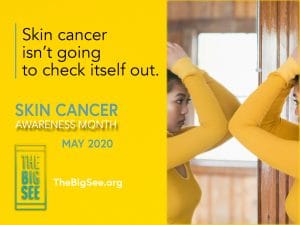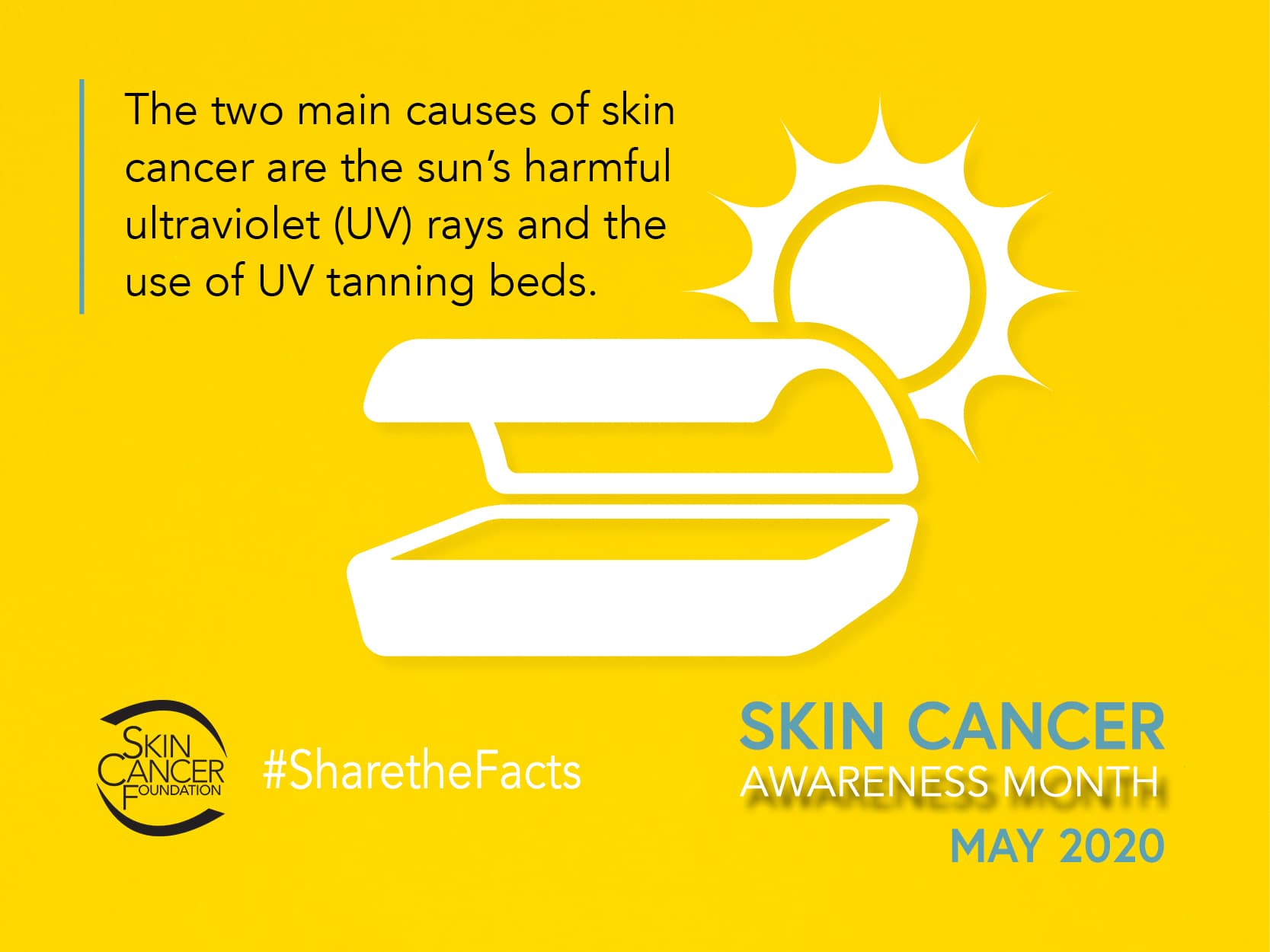Before we get to that, lets fist do a little Q&A about skin cancer as May is the Skin Cancer awareness month:
- About many cases of skin cancer are diagnosed every year in the US? More than 5 million
- What percent of Americans develop skin cancer by age 70? 20%. That’s 1 in every 5 people.
- What are the types of UV light and which one is harmful? There are two types of harmful UV light types- UV light A and UV light B- and being exposed too much of either one can lead to skin cancer.
- What are the main types of skin cancer? Melanoma (most serious), basal cell (most common), squamous cell carcinoma are the main 3 types.
- How common is Melanoma? It is the fifth most common type of cancer in US.
- How does a skin burn affect risk of getting melanoma? If you have had more than 5 sunburns, your risk is doubled
- Will you be exposed to any UV light if it is a cloudy day where you can’t even see the sun? Yes. In fact thought UV light is strongest in Spring and Summer, you are still getting exposed during the rest of the year, just not as much.
- What’s the minimum SPF you should use? Use at least an SPF of 30
- Are you fine if you just wear a shirt? A typical T Shirt has SPF less than 15 so it’s good to supplement with other protection.
- Is white or black shirt? If you wet the shirt is it better? Black shirt does better in protecting than white. If your shirt gets wet, its sun protection gets a good bit lower.
So what can we do?
– Wear Sunscreen very often. Why? It helps protect against the harmful UV lights. Use at least an SPF of 30 and make sure it’s Broad Spectrum, which means it protects against both UVA and UVB lights. A 30 spf protects you from 97% of the UVB lights, whereas a 15 spf protects you from 93% of the UVB lights). Don’t only do this when you can see the sun during the day or just in the Summer.
– In addition to skin cancer, sunlight also contributes to the aging of the skin. So if you’re not going to apply sunscreen to protect yourself from skin cancer, apply it to avoid wrinkles (whatever reason will get you to use sunscreen).
– Reapply sunscreen every 2 hours.If you get in the water or are sweating, reapply it more often (eg after getting out of the water).
– Wear a wide-brim hat to protect face, ears, and neck.
– Tightly woven clothing covering skin, if possible with long sleeves to cover arms and legs. .Some of UV light can still get through clothing so if possible go ahead and apply the sun screen to the areas covered by clothing too.
– The UV lights are the strongest during 10am-4pm. So if possible, avoid the sun or stay in the shade during this time.
– Please avoid tanning beds.
Well, why are we writing all these facts? It’s not only for awareness but also for being proactive. Let’s say we carry out all of the steps above, are we done? You will reduce your risk if you do all of the above. However, nothing is perfect and this won’t reduce the risk to 0% so you also want to be proactive and check your body for any suspicious lesions. When caught at a very early stage, skin cancer can have a very high survival rate. What’s a suspicious lesion?
A good rule of thumb is to use the mnemonic ABCDE:
A – asymmetry -If you take a line through the middle and the left and right side don’t match exactly.
B – borders- If borders are irregular (not round and smooth).
C – color – If multiple colors present (color is not uniform).
D – diameter – If diameter is bigger than 6mm (about the head of a pencil eraser).
E – evolving – If there is any change.
With this mnemonic in mind, go through all parts of your body to do a self check. It’s good to do this about once a month. One way to go through the body is summarized below. There are different ways to do this, including reference site shown on the picture.

Let’s do a quick scan over our body using the below tips:
- Start with face, including nose, mouth, lips, ears (get a mirror to check back of ears too).
- Check your scalp. Often using a blow-deryer and mirror can help.
- Check hands- back and front. Don’t forget between the fingers and even underneath fingernails.
- Check arms- Go from your wrist to elbows and again back and front sides. It’s hard to see back of arms, especially for elbow up to the shoulders so stand in front of mirror. Don’t forget armpits.
- Neck, chest and torso. This includes underneath breasts for women.
- Upper back and lower back. Again a full length mirror will help.
- Genitals and legs: Here using a hand mirror will help. Sitting down with legs extended, go down from thighs to knees to knees to ankles and feet. Make sure to check the sides of the legs as well. Don’t forget toes, between toes and underneath toenails, soles of the feet. Then do the back of the legs.
If you see something on your skin that may trigger a concern, please let either your primary care physician or dermatologist know right away.
Take care and have a great day.
Efe Sahinoglu, MD with Birmingham Direct Primary Care
